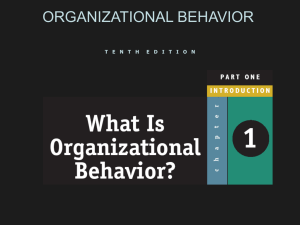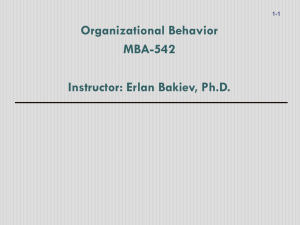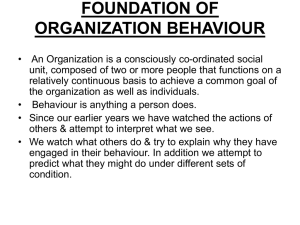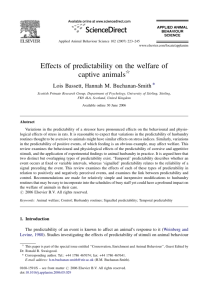ob introduction
advertisement
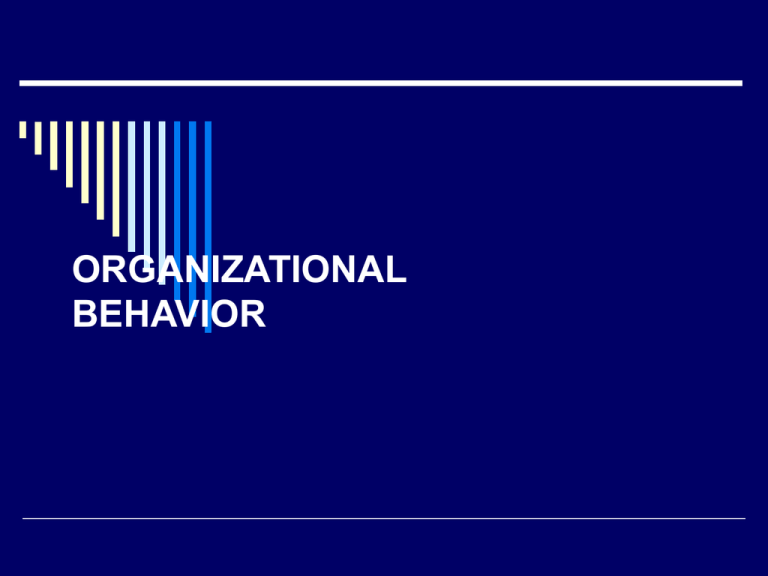
ORGANIZATIONAL BEHAVIOR Definition OB is defined as a systematic study of actions and reactions of individuals, groups and sub systems Challenges faced by Managers Improving quality & Productivity Improving Customer service Improving People Skills Stimulating Innovation & Change Coping with temporariness Working in Net-worked Organizations Helping employees balance work – life conflict Creating positive Work environment Improving ethical behavior Why Study OB To learn about yourself and how to deal with others You are a part of an organization & will continue… You are expected to work in teams You may want to be managers Understand Organizational Events Predict Organizational Events Influence Organizational Events Bases of Organizational Behavior 1) Psychology 2) Sociology 3) Social Psychology 4) Anthropology 5) Political Science Changing trends in Business Globalization Workforce Diversity Employment Relationship Information Technology Lots of Teams Business Ethics Basic OB Model Organizational system Level Group Level Individual Level Challenges in the Individual level Individual differences Job Satisfaction Motivation Empowerment Behaving Ethically Challenges in the Group Level Working with Others Work force Diversity Challenges in the Organizational Level Productivity Developing Effective Employees Efficiency Putting people First Global Competition Managing & Working in a multi Cultural World Organizational Citizenship Behavior Discretionary Behavior that is not part of an employer’s job requirement, but that nevertheless promotes the effective functioning of the Organization Putting People First Putting People 1st generates a committed workforce and positively affects the bottom line People will work harder when they feel they have more control and say in their work How to put people first Provide employment security Hire well Create self managed teams Pay well Provide extensive training Reduce status differences Share information about organizational performance Organizational Behavior Models Autocratic Model Custodial Model Supportive Model Collegial Model The Rigour of OB OB looks at consistencies. _ What is common about behavior and helps predictability OB looks beyond Common sense _ Systematic study, based on scientific evidence OB has a few absolutes OB takes a Contingency approach _ Considers behavior in context OB Looks at Consistencies What is common about behaviour, and helps predictability? Certainly there are differences among individuals. Placed in similar situations, all people don’t act exactly alike. However, there are certain fundamental consistencies underlying the behaviour of all individuals. OB Looks Beyond Common Sense Systematic study Looking at relationships, attempting to attribute causes and effects and drawing conclusions based on scientific evidence Behaviour is generally predictable. There are differences between individuals. There are fundamental consistencies. There are rules (written and unwritten) in almost every setting. OB Has Few Absolutes There are few simple and universal principles that explain organizational behaviour. Human beings are very complex. Humans are not alike, which limits the ability to make simple, accurate, and sweeping generalizations. OB Takes a Contingency Approach Considers behaviour within the context in which it occurs.
